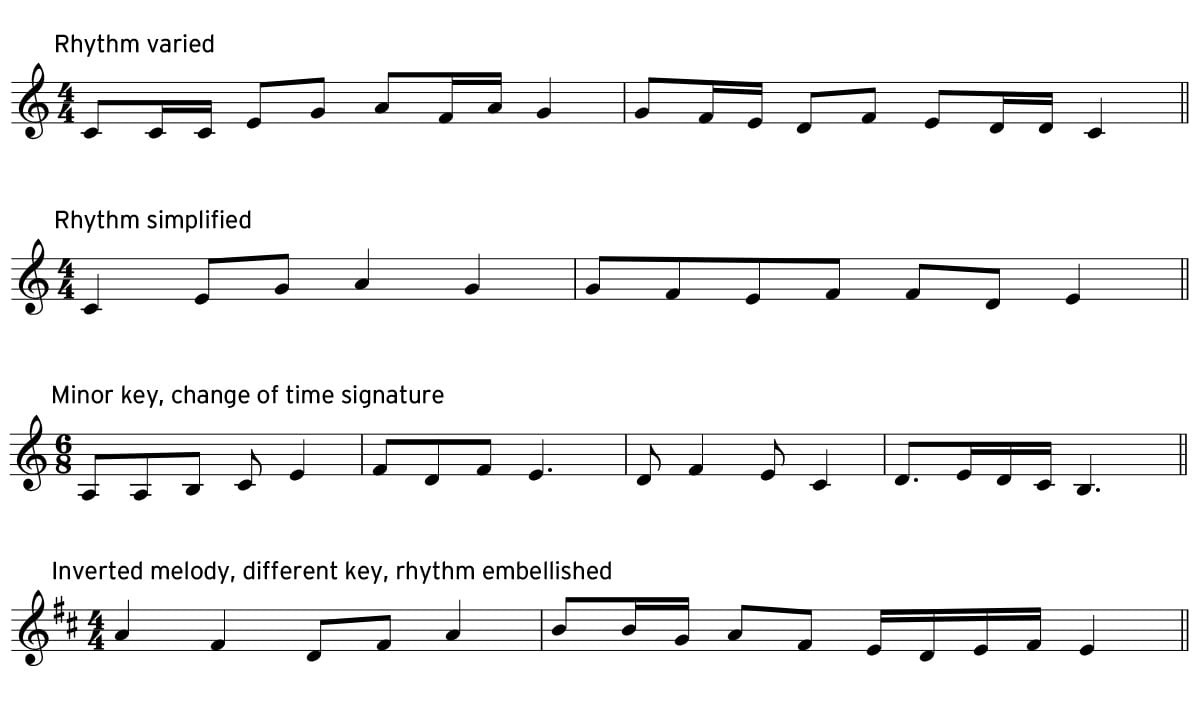Composing is a great way to express your own creativity and personality; to get your ideas down in sound. In this article I’ll show you some simple composing examples — lots of musicians out there are composing, so I hope this inspires you to have a go!
Music can be seen as a conversation — a series of phrases with questions and answers, commas, full-stops and occasional exclamation marks! Here are some possible ways to begin:
COMPOSITION STARTERS
Let’s look at the first of those approaches next.
Whether the title comes first or emerges from the music, it may then define the direction of your piece. Is the title descriptive, does it have a strong rhythm? Words can be the basis of your piece; no-one even needs to know about it!
For instance, let’s take an everyday idea for some word rhythms — the weather. I wrote this simple question and answer phrase on a newspaper so I didn’t forget it; after it had been in my head for a while I sang it into my phone and extended the phrases a bit.

Later I wrote down my first idea:

So now we have a two-bar motif (short phrase). Does it sound finished or unfinished (a question)? Can you think of a phrase that answers it?
Congratulations — you’re composing.
Now this is where you can have some fun; mess around, or improvise, with your idea: run it through in your head or under your fingers for a while — improvise on the motif, change the ending, think of a contrasting theme. Develop your melody, embellish it, play it in a different key or with a different accompaniment, make it longer, change the rhythm, turn it upside down...

The next stage is to turn your ideas into a piece, or a song. For this, we need to look at the building blocks: scales, modes, chords, form (structure), melody, rhythm, and style.

Here are some things to keep in mind:
Make sure your piece sounds integrated — if you have more than one melody do they relate to each other? Your new melody may actually be the beginnings of a new piece entirely. Keep it simple and don’t over write, sometimes your first idea is the best
Good luck with your composing!